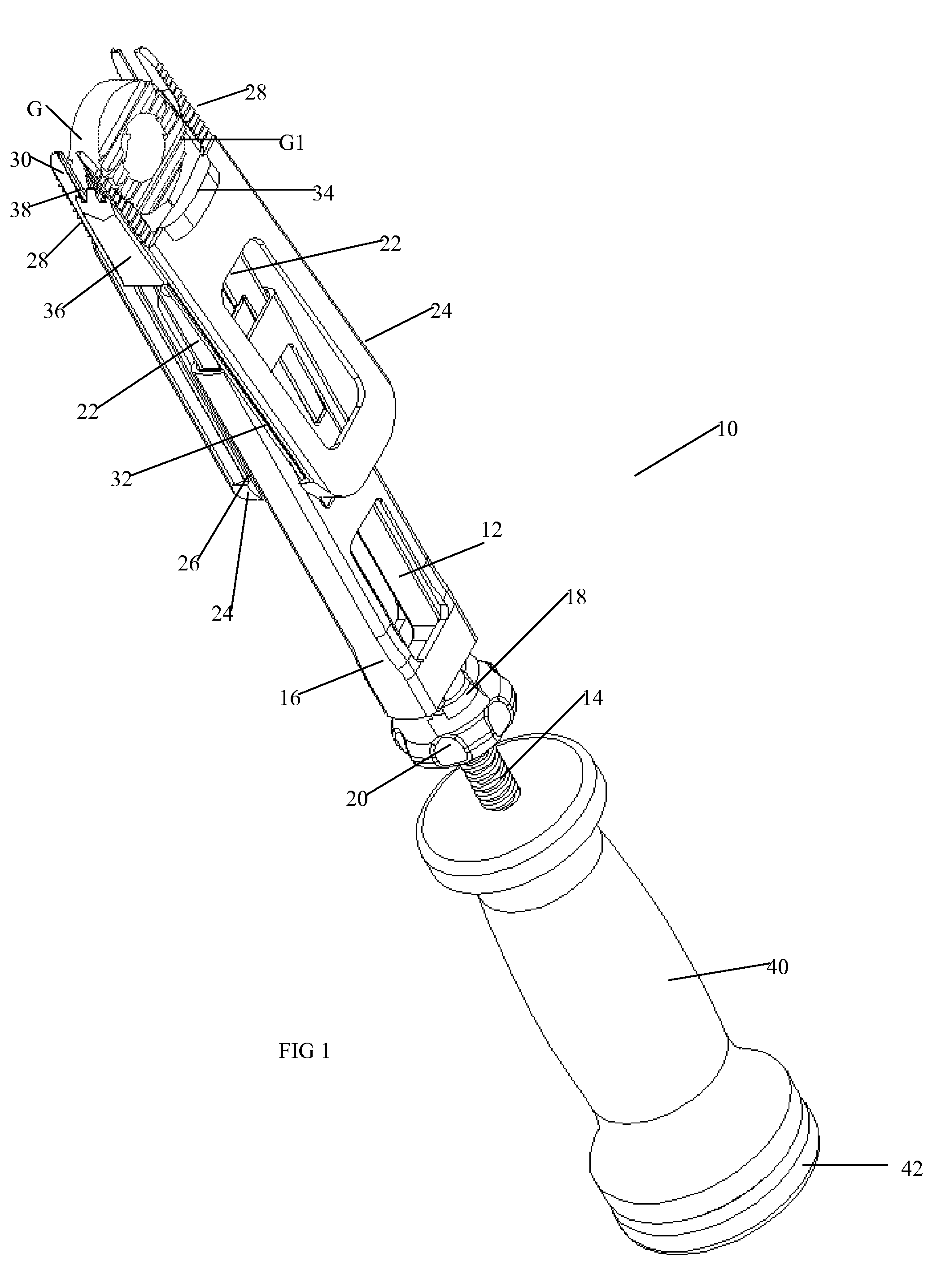Apparatus and Methods for Inserting an Implant
a technology for implanting and disorienting the body, applied in the field of interbody distraction and implant/transplant insertion, can solve the problems of affecting the implantation process, affecting the insertion process, so as to achieve the effect of convenient removal and convenient removal
- Summary
- Abstract
- Description
- Claims
- Application Information
AI Technical Summary
Benefits of technology
Problems solved by technology
Method used
Image
Examples
Embodiment Construction
[0051]FIG. 1 is a right side perspective view of an intervertebral implant insertion instrument 10 for use in distracting adjacent bony structures such as adjacent spinal vertebrae V1 and V2, and / or for inserting an implant G and / or transplant of selected size and shape therebetween, in accordance with one or more embodiments of the present invention.
[0052]In one or more embodiments, the insertion instrument 10 and related implant G may be adapted for use in spinal surgical procedures for placement of the implant G into a distracted intervertebral space wherein the implant G may subsequently serve as a load bearing spacer element for maintaining a prescribed spacing between adjacent vertebral structures (or “vertebrae”) V1 and V2. In this regard, the implant G may be formed from a relatively sturdy and biocompatible material such as (but not limited to) a selected metal or metal alloy, bone, polymer, carbon fiber-reinforced polymer and / or ceramic. The implant G may be formed with a ...
PUM
 Login to View More
Login to View More Abstract
Description
Claims
Application Information
 Login to View More
Login to View More - R&D
- Intellectual Property
- Life Sciences
- Materials
- Tech Scout
- Unparalleled Data Quality
- Higher Quality Content
- 60% Fewer Hallucinations
Browse by: Latest US Patents, China's latest patents, Technical Efficacy Thesaurus, Application Domain, Technology Topic, Popular Technical Reports.
© 2025 PatSnap. All rights reserved.Legal|Privacy policy|Modern Slavery Act Transparency Statement|Sitemap|About US| Contact US: help@patsnap.com



